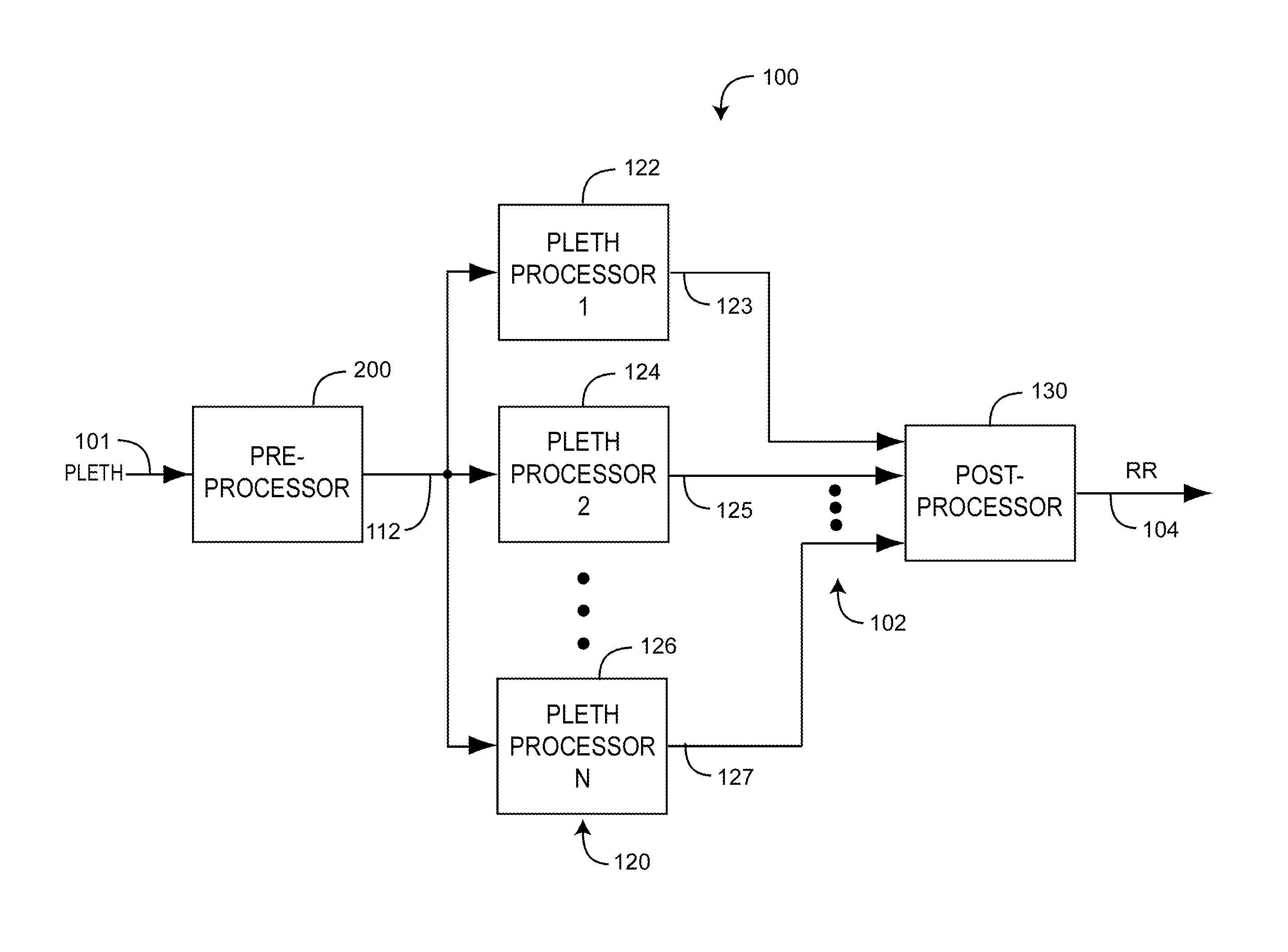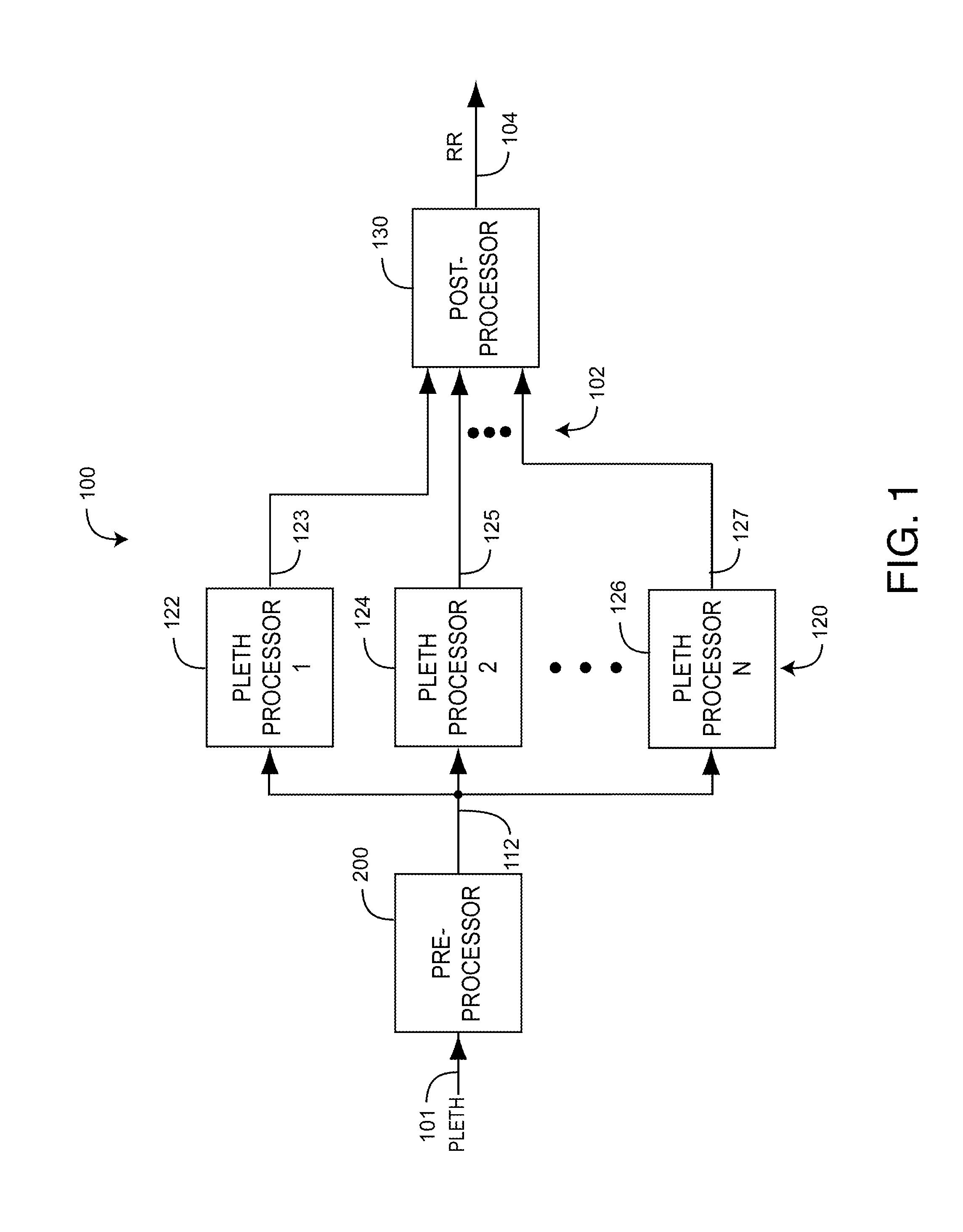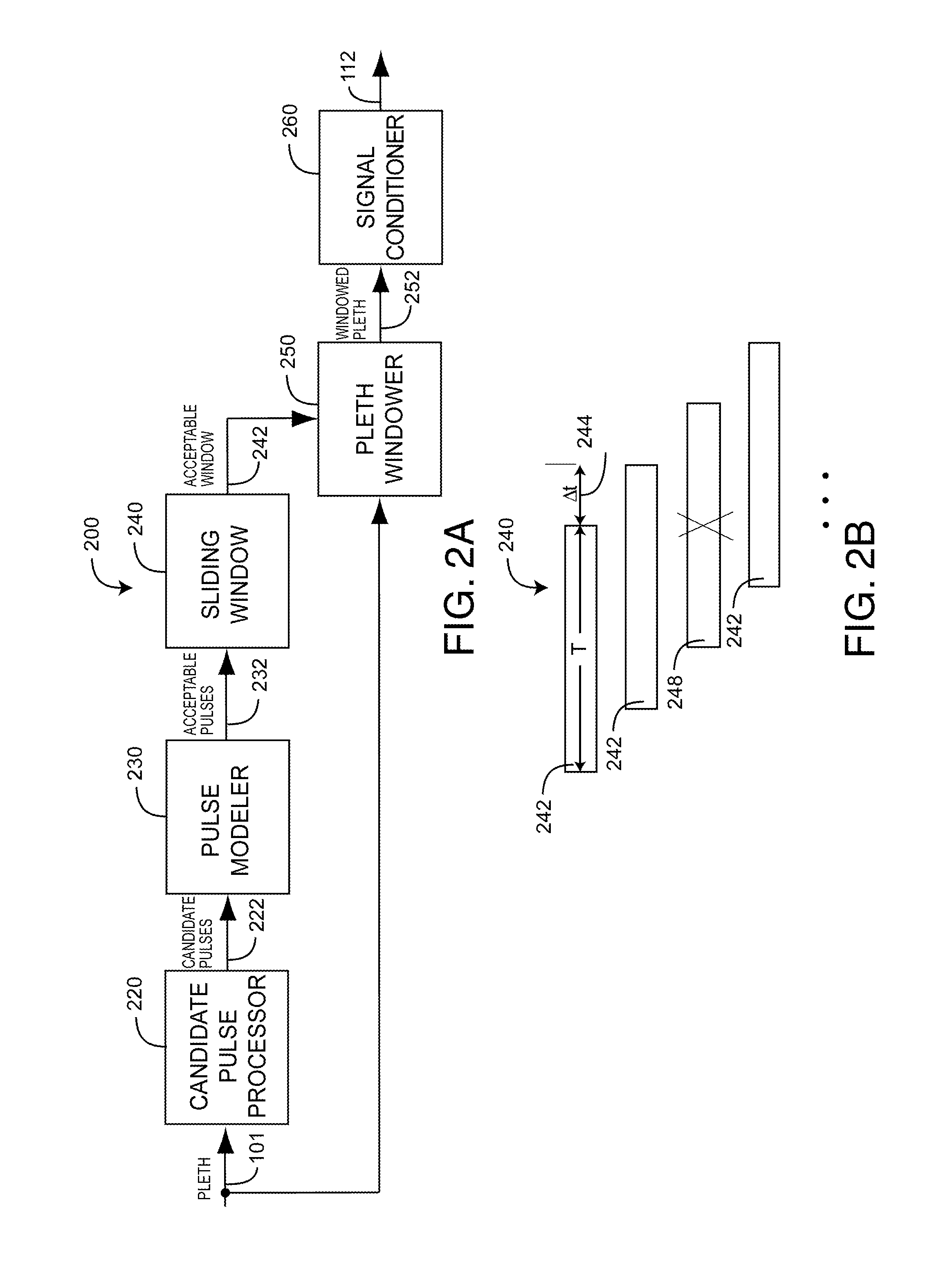Plethysmographic respiration processor
- Summary
- Abstract
- Description
- Claims
- Application Information
AI Technical Summary
Benefits of technology
Problems solved by technology
Method used
Image
Examples
Embodiment Construction
[0038]FIG. 1 illustrates a plethysmographic respiration processor 100 embodiment having a plethysmograph waveform (pleth) input 101 and a respiration rate (RR) output 104. The pleth respiration processor 100 includes a preprocessor 200, one or more pleth processors 120 and a post processor 130. The pleth 101 is derived from an optical sensor attached to a tissue site, which is in communications with a pulse oximeter or blood parameter monitor, as described with respect to FIGS. 14-17, below. The pre-processor 200 derives acceptable pleths 112, as described in detail with respect to FIGS. 2A-B, below. The pleth processor(s) 120 each operate on acceptable pleths 112 so as to generate respiration-rated parameters 102 responsive to a person's respiration. The pleth processors 120 may operate in the time domain, the frequency domain or a mix of time or frequency domains. Pleth processors 120 are described in detail with respect to FIGS. 3-8, below. The post-processor 130 resolves or othe...
PUM
 Login to View More
Login to View More Abstract
Description
Claims
Application Information
 Login to View More
Login to View More - R&D
- Intellectual Property
- Life Sciences
- Materials
- Tech Scout
- Unparalleled Data Quality
- Higher Quality Content
- 60% Fewer Hallucinations
Browse by: Latest US Patents, China's latest patents, Technical Efficacy Thesaurus, Application Domain, Technology Topic, Popular Technical Reports.
© 2025 PatSnap. All rights reserved.Legal|Privacy policy|Modern Slavery Act Transparency Statement|Sitemap|About US| Contact US: help@patsnap.com



